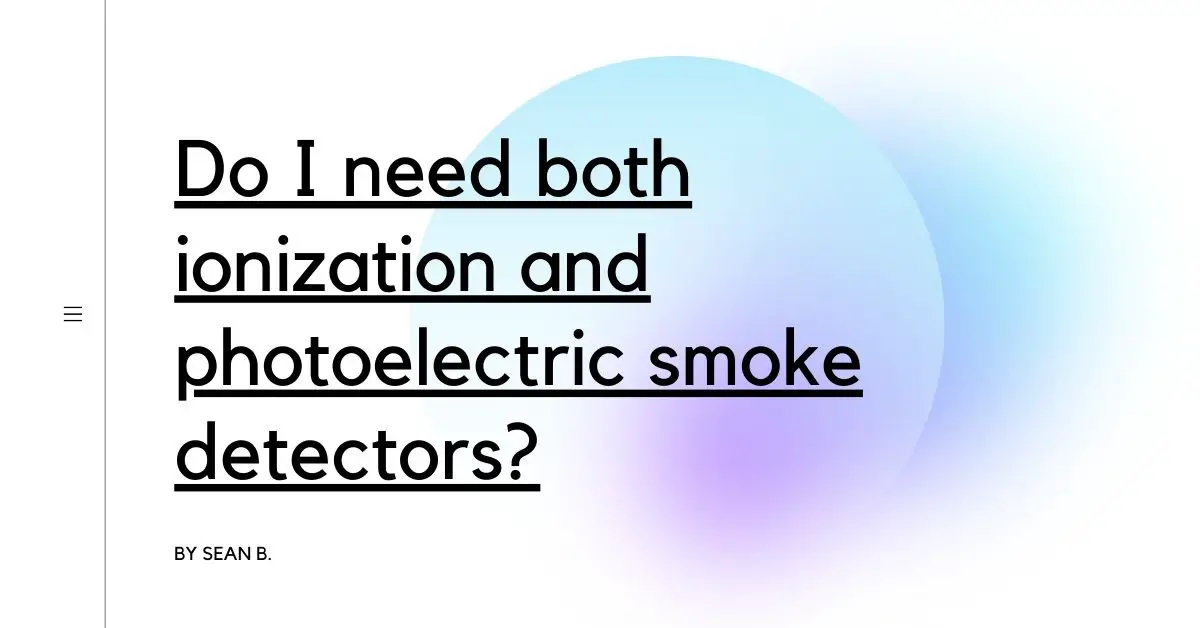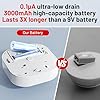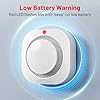When it comes to home security, most people know that having a smoke detector is important. But what many people don’t know is that there are two different types of smoke detectors: ionization and photoelectric, and that you might need both in your home.
In this blog post, we’ll take a look at the differences between ionization and photoelectric smoke detectors, and help you decide which one (or both!) is right for your home.
Contents
Ionization vs. photoelectric smoke detectors
There are two types of smoke detectors: ionization and photoelectric. Both have their pros and cons, so it’s important to understand the difference between the two before deciding which type is right for your home.
Ionization smoke detectors are more sensitive to smaller, invisible particles that are given off when a fire is just starting. This makes them better at detecting fast-burning fires. However, they can also be more prone to false alarms, because they’re sensitive to any kind of smoke, even if it’s not from a fire.
Photoelectric smoke detectors are more sensitive to larger particles that are given off when a fire has been burning for a while. This makes them better at detecting smoldering fires. They’re also less likely to cause false alarms, because they’re not as sensitive to small particles.
So, do you need both ionization and photoelectric smoke detectors? It depends. If you’re concerned about fast-burning fires, then an ionization smoke detector is a good choice. But if you’re concerned about smoldering fires, then a photoelectric smoke detector is a better choice. And if you want the best protection against both types of fires, then you should install both types of detectors in your home.
The benefits of ionization smoke detectors
When it comes to fire safety in the home, many people are unsure of which type of smoke detector to use. Ionization detectors are more sensitive to smaller, invisible particles that are emitted during a fast-flaming fire, while photoelectric detectors are more sensitive to larger smoke particles that are emitted during a smoldering fire. Both types of detectors are important in protecting your home and family from fire.
Ionization detectors are more sensitive to smaller, invisible particles that are emitted during a fast-flaming fire. These particles are typically made up of lightweight atoms or molecules that are easily ionized, or given an electrical charge. When the particles come into contact with the detector’s ionization chamber, they cause a current that sets off the alarm.
Photoelectric detectors are more sensitive to larger smoke particles that are emitted during a smoldering fire. These particles are usually made up of larger, heavier atoms or molecules that are not easily ionized. When the particles enter the detector’s light-sensitive chamber, they cause the light to scatter. This scattered light is detected by a photosensor, which sets off the alarm.
Both types of detectors are important in protecting your home and family from fire. Ionization detectors are better at detecting fast-flaming fires, while photoelectric detectors are better at detecting smoldering fires. If you have both types of detectors in your home, you’ll be able to better protect your family from all types of fires.
The benefits of photoelectric smoke detectors
When it comes to fire safety, every home should have both ionization and photoelectric smoke detectors. Here’s why:
Ionization smoke detectors are best at detecting fast-flaming fires, which spread quickly and can cause a lot of damage. These fires are typically caused by flammable liquids or gases.
Photoelectric smoke detectors, on the other hand, are better at detecting smoldering fires, which can smolder for hours before bursting into flames. These fires are usually caused by burning materials like wood or paper.
So, having both types of detectors in your home gives you the best chance of detecting a fire, no matter how it started.
The best smoke detectors for your home
There are two types of smoke detectors: ionization and photoelectric. Which type you need depends on your home and your family’s needs.
Ionization smoke detectors are better at detecting smaller particles, such as those produced by flaming fires. They are less likely to false alarm, but they may not detect smoke from smoldering fires as quickly.
Photoelectric smoke detectors are better at detecting larger particles, such as those produced by smoldering fires. They are more likely to false alarm, but they may detect smoke from smoldering fires more quickly.
If you have a family member who is a heavy smoker, you may want to consider having both types of smoke detectors in your home. If you have a family member who is deaf or hard of hearing, you may want to consider having a smoke detector with a strobe light.
When to replace your smoke detectors?
There are two types of smoke detectors available on the market: ionization and photoelectric. Both types of smoke detectors are designed to detect smoke and raise an alarm, but they work in different ways.
Ionization smoke detectors work by ionizing the air in the room. This means that they create a small electrical current in the air. When smoke particles enter the detector, they disrupt the current and trigger the alarm.
Photoelectric smoke detectors work by shining a light beam into the room. When smoke particles enter the detector, they scatter the light and trigger the alarm.
So, which type of smoke detector should you choose? If you’re not sure, it’s a good idea to get both types of detectors. That way, you’ll have the best possible chance of detecting a fire, no matter what type of smoke is present.
How to install smoke detectors?
It’s a common question: do you need both ionization and photoelectric smoke detectors? The answer is that it depends on your needs. If you’re looking for the most comprehensive protection, you should install both types of detectors.
Ionization smoke detectors are better at detecting smaller particles, which makes them better at detecting fast-burning fires. Photoelectric smoke detectors are better at detecting larger particles, which makes them better at detecting smoldering fires.
So, if you’re looking for the best protection against all types of fires, you should install both ionization and photoelectric smoke detectors.
How to test your smoke detectors?
When it comes to protecting your home and family from fires, having both ionization and photoelectric smoke detectors is the best way to go. Here’s why:
Ionization detectors are better at detecting fast-flaming fires, which tend to be more destructive. Photoelectric detectors are better at detecting smoldering fires, which tend to be more deadly.
So, having both types of detectors in your home gives you the best chance of being alerted to a fire, no matter what kind it is.
To test your smoke detectors, simply push the test button on the unit. This will send a signal to the detector that simulates the conditions of a fire, and the detector should respond by sounding the alarm.
Summary
When it comes to fire safety, you can never be too careful. That’s why many homes and businesses have both ionization and photoelectric smoke detectors. But do you really need both?
Ionization smoke detectors work by detecting particles of combustion in the air. They’re better at detecting fast-burning fires, but they can be more susceptible to false alarms from things like cooking smoke.
Photoelectric smoke detectors work by detecting changes in the light levels in the air. They’re better at detecting smoldering fires, but they can be more susceptible to false alarms from dust and insects.
So, which is best for you? If you’re not sure, it’s probably best to err on the side of caution and have both types of detectors in your home or business. That way, you’ll be sure to have the earliest possible warning of a fire, no matter what kind it is.



















